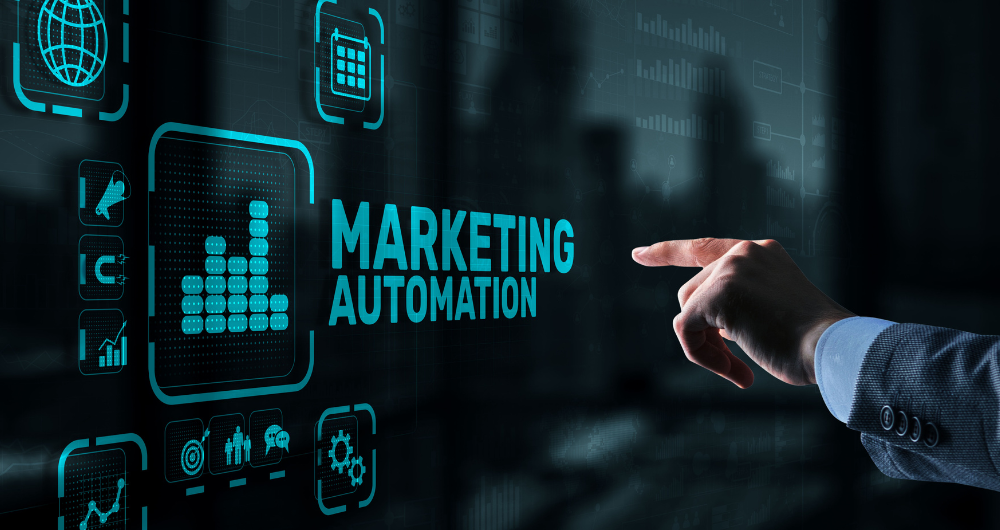
As banks strive to meet the ever-evolving demands of their customers, marketing automation offers a way to streamline communication, enhance customer experiences, and ultimately drive growth.
In an industry where customer relationships are paramount, marketing automation enables banks to deliver messages while real-time messages makes them timely, and relevant. This capability is crucial for nurturing leads, retaining customers, and cross-selling products.
However, to truly optimize their marketing strategies and customer interactions, banks can benefit from incorporating Real-Time Decision Engines into their technology stack. Unlike traditional marketing automation systems, Real-Time Decision Engines analyze and respond to customer data instantaneously. This real-time capability allows banks to react to customer actions and events as they happen, providing immediate, relevant responses that enhance the customer experience.
Real-Time Decision Engines are particularly valuable for purposes beyond traditional marketing campaigns. They play a crucial role in improving the banking experience, ensuring that customers feel valued and supported, and also very useful in creating impactful promotional communication by being sent at the most relevant moment. In the realm of security, these engines are essential for sending critical alerts, such as fraud notifications or important account updates, without delay. By ensuring that these alerts are sent on time, banks can significantly reduce the risk of security breaches and enhance overall customer trust.
In this post, we will explore the role of marketing automation in banking, examine the challenges this technology faces, and provide strategies to boost your banking marketing automation campaigns. Additionally, we will discuss the benefits of using real-time technology to enhance overall customer engagement and operational efficiency.
Understanding of marketing automation in the banking sector
Marketing automation involves utilizing advanced software and technological tools to streamline marketing processes, automate repetitive tasks, and manage intricate campaigns across various channels. It integrates a range of software solutions, including systems for customer relationship management (CRM), email marketing, content management (CMS), and analytics.
Fundamentally, marketing automation boost operational efficiency, enhance customer interactions, and drive revenue growth by automating repetitive tasks and delivering personalized messages to targeted audiences at optimal times.
Here are some practical applications of marketing automation in the banking sector :
- Lead Generation and Nurturing: Marketing automation facilitates the identification and cultivation of leads through targeted campaigns and personalized content based on customer behavior and preferences. The trigger that generates that lead comes from a unique opportunity in a short time frame where a banking product was relevant, the starting point of these campaigns is real-time awareness.
- Customer Onboarding: Automated onboarding processes ensure a smooth and personalized experience for new customers. Banks can deliver timely welcome messages, educational content, and product information automatically, laying a strong foundation for long-term customer relationships. For any informational or critical communication in this process, real-time messages are a must: OTP’s password recoveries, information on causes of error messages, etc.
- Cross-Selling and Upselling: While Marketing Automation tools enables banks to identify opportunities for cross-selling and upselling by analyzing customer data and behavior, Real-Time communication powered by Latinia enables personalized recommendations and offers to be delivered at opportune moments, boosting sales and increasing customer lifetime value.
- Customer Engagement and Retention: Automated communications generate lower engagement than real-time business rules management systems that can help banks send relevant updates and targeted promotions, introducing the context dimension in the ecuation, fostering loyalty and retention.
- Analytics and Insights: Both Marketing automation and real-time BRMS like Latinia provides robust customer analytics and reporting capabilities, offering banks real-time insights into campaign performance, customer engagement metrics, and return on investment (ROI). This data-driven approach enables banks to optimize marketing strategies and resource allocation effectively.
How to boost marketing automation campaigns with real time decision engines
As banking evolves in the digital age, traditional marketing automation systems face challenges that can limit their effectiveness in meeting modern customer expectations and market demands. These systems are typically designed for scheduled campaigns and batch processing, relying on predefined rules and historical data. While they streamline workflows and manage interactions efficiently, they may struggle to adapt quickly to real-time customer behaviors and emerging market trends.
To address these limitations, banks are increasingly turning to Real-Time Decision Engines. These advanced tools leverage sophisticated algorithms and real-time data analytics to analyze customer behaviors instantly and make immediate decisions. By integrating Real-Time Decision Engines with existing marketing automation platforms, banks can enhance their ability to respond swiftly to customer actions.
Next, we will explore how this technology can enhance banking marketing automation campaigns.
Real-Time Automatic Segmentation
Effective real-time communication hinges on robust customer segmentation. While digital tools optimize online communications, understanding real-world customer behavior is equally crucial.
Real-time automatic segmentation leverages the analysis of transactional events and customer data to categorize customers dynamically:
- Transactional Event Analysis: Every customer interaction and transaction with the bank provides valuable data insights into their habits and preferences, whether online or offline.
- Real-Time Marketing: Utilizing real-time data to deliver personalized messages and offers to customers at the right moment through the appropriate channels.
- Offer Customization: Ensuring offers and communications align with immediate customer needs and preferences, optimizing relevance and engagement.
Enhanced Personalization
Real-time decision engines significantly enhance campaign personalization in banking. By analyzing customer behaviors and interactions instantaneously, these engines enable banks to deliver highly tailored messages and offers. This hyper-personalization ensures that communications are not only timely but also relevant to each customer’s immediate needs and preferences.
Improved personalization leads to a better customer experience as customers receive communications that resonate with their interests. Messages that are perceived as more relevant are more likely to be accepted and acted upon by customers, thereby enhancing engagement and satisfaction. Ultimately, this personalized engagement drives higher conversion rates and boosts sales by aligning marketing efforts closely with customer expectations and behaviors.
Integrating CRM Systems with Real-Time Decision Engines
The realm of banking CRM is rapidly evolving, driven by new technologies and shifting customer expectations. Current trends highlight a move towards real-time personalized interactions and an increased emphasis on using transactional data to understand customer behavior. By combining effective CRM strategies with Real-Time Decision Engines, banks can achieve several key benefits:
Banks can gain a deeper understanding of customer needs and preferences by integrating Real-Time Decision Engines with CRM systems. This integration allows for hyper-personalized strategies, as real-time data provides up-to-the-minute insights into customer behavior and preferences. As a result, banks can tailor their marketing efforts to deliver the right message, product, or offer at the most opportune moment, enhancing customer satisfaction and loyalty, and reducing operational CRM costs.
Real-Time Decision Engines also significantly improve the efficacy of critical notifications. Whether it’s a security alert, a time-sensitive offer, or an important account update, real-time processing ensures that customers receive relevant information promptly. This not only boosts engagement but also helps in building trust and reliability, as customers feel assured that they are always kept informed.
Improving Response Time and Customer Engagement
Real-Time Decision Engines play a crucial role in improving response times and customer engagement. By processing data instantaneously and making decisions on the fly, these engines enable banks to respond to customer needs and behaviors with remarkable speed and precision.
- Enhanced Responsiveness: One of the primary advantages of Real-Time Decision Engines is their ability to analyze and act on data as it is generated. This means that banks can respond to customer actions immediately, whether it’s sending a follow-up email after a transactio or offering a relevant product based on recent activity.
- Increased Engagement: Customers are more likely to interact with communications that are relevant to their current situation.
- Proactive Customer Service: By continuously monitoring customer behavior, these engines can predict potential issues and address them before they escalate. This proactive approach not only resolves problems quickly but also demonstrates the bank’s commitment to customer satisfaction.
Predictive Analytics for Proactive Marketing
Leveraging predictive analytics with Real-Time Decision Engines revolutionizes how banks approach marketing by enabling proactive strategies that anticipate customer needs and behaviors. This approach not only enhances the effectiveness of marketing campaigns but also significantly improves customer satisfaction and loyalty.
Predictive analytics uses historical data and machine learning algorithms to forecast future actions and preferences, allowing banks to predict what products or services a customer might need next. This capability ensures that banks can offer relevant solutions before customers even recognize the need themselves.
For instance, if data indicates that a customer is likely to be interested in a loan based on their recent activities and financial profile, the bank can proactively offer relevant loan options before the customer even asks.
Enhancing Security and Compliance

Real-Time Decision Engines provide banks with the capability to monitor transactions and account activities in real-time. By doing so, banks can instantly detect any suspicious behavior or potential security threats, such as unauthorized transactions or unusual account access patterns. Immediate detection allows banks to send critical alerts to customers, notifying them of potential security issues and prompting them to take necessary actions to protect their accounts.
Moreover, Real-Time Decision Engines help banks comply with stringent regulatory requirements. Regulations such as the Payment Services Directive 2 (PSD2) mandate that financial institutions implement robust measures to detect and prevent fraud. By utilizing real-time monitoring and alert systems, banks can ensure that they are meeting these regulatory standards. Quick detection and response to fraudulent activities demonstrate compliance with these regulations, helping banks avoid hefty fines and legal repercussions.
Benefits of using real-time technology
Real-time technology is transforming marketing automation in the banking sector by providing immediate insights and enabling agile decision-making processes. This technology enhances marketing effectiveness and operational efficiency in several key ways:
- Immediate Customer Insights: Real-time data processing provides banks with up-to-the-moment insights into customer behaviors and preferences, facilitating more targeted and personalized marketing campaigns.
- Enhanced Customer Experience: By responding to customer interactions in real time, banks can deliver timely and relevant communications, improving customer satisfaction and engagement.
- Improved Campaign Effectiveness: Real-time technology enables dynamic adjustments to marketing campaigns based on immediate feedback and performance metrics, ensuring campaigns are always optimized for maximum impact.
- Fraud Detection and Security: Real-time monitoring helps detect and respond to suspicious activities promptly, enhancing fraud prevention measures and ensuring data security.
- Compliance with Regulations: Real-time tracking and reporting capabilities assist banks in meeting regulatory requirements by ensuring all marketing activities adhere to legal standards and data privacy laws.
- Reducing Customer Churn: By identifying and responding to customer behaviors in real time, banks can proactively address issues that may lead to customer dissatisfaction or attrition.
- Lower Operational Costs: Automation of decision-making processes reduces manual intervention and streamlines operations, thereby lowering overall operational costs.
Latinia: Beyond marketing automation
It’s important to clarify that Latinia is not simply a marketing automation tool; instead, it complements these tools effectively to enhance customer experiences across both digital and physical channels.
Latinia focuses primarily on real-time analysis of various events and data sources, encompassing both online and offline interactions. At the heart of Latinia’s capabilities is its Next Best Action (NBA) Real-Time Decision Engine, a powerful tool designed to drive sales, deliver value, and cultivate customer loyalty. This is achieved through sophisticated analysis of transactional data, customer intelligence, and advanced business rules.
Latinia’s NBA software operates on three foundational principles.
- Firstly, it leverages transactional data that provides insights into customers’ financial activities, whether conducted online or offline. This comprehensive understanding of customer behavior forms the basis for highly personalized recommendations.
- Secondly, Latinia utilizes customer intelligence data, which includes demographics, preferences, and historical interactions. By harnessing this information, Latinia identifies individual customer needs and tailors recommendations accordingly, significantly enhancing customer engagement and satisfaction.
- Lastly, Latinia’s NBA software employs advanced business rules to analyze transactional and customer data swiftly. This capability enables real-time decision-making and the delivery of context-sensitive recommendations, ensuring timely and relevant customer interactions.
In summary, while Latinia collaborates with marketing automation tools, it stands out as a real-time decision engine that excels in analyzing events both online and offline.
Ready to elevate your marketing automation campaigns? Contact Latinia today to learn how our Real-Time Decision Engine can help you achieve exceptional results.
Categories: Marketing & Sales

